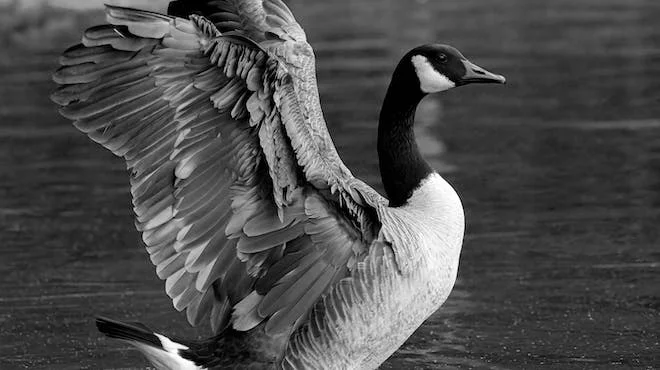
Have you ever wondered what it feels like to be an eagle, soaring high above the world, free and powerful? If so, you might enjoy reading “The Eagle” by Alfred Lord Tennyson. He’s one of the most famous poets of the Victorian era. In this short but striking poem, Tennyson captures the essence of the majestic bird. He uses vivid imagery, personification, and metaphors to convey its beauty, solitude, and strength. Today, we will explore the subject, author, context, theme, tone, form, and poetic techniques of this poem. Let’s see what we can learn from it.
The Eagle by Alfred Lord Tennyson He clasps the crag with crooked hands; Close to the sun in lonely lands, Ring'd with the azure world, he stands. The wrinkled sea beneath him crawls; He watches from his mountain walls, And like a thunderbolt he falls.
Subject
The subject of the poem is the eagle, a symbol of nobility, courage, and freedom. The majesty and dominance of the eagle are expressed throughout the poem, describing its appearance, position, and movement. Additionally, the poem suggests a stark contrast between the eagle and the human world.
The eagle is depicted as being close to the sun, circling in the blue sky, and watching from his mountain walls while the sea beneath him crawls. The poem ends with vivid imagery, with the eagle diving like a thunderbolt, showing its speed and power.
Author
The author of the poem is Alfred Lord Tennyson, one of the most popular and influential poets of the 19th century. He was born in 1809 in Lincolnshire, England, and showed an early talent for poetry. Tennyson attended Cambridge University, where he met his close friend Arthur Hallam. Hallam’s death in 1833 inspired Tennyson’s masterpiece, “In Memoriam.”
In 1850, Tennyson became the Poet Laureate of Britain. Throughout his career, he wrote many poems on various topics, including nature, love, death, history, and mythology. Tennyson passed away in 1892 and is buried in Westminster Abbey.
Inspiration for the poem
One possible source of inspiration for the poem “The Eagle” by Alfred Lord Tennyson is his frequent travels to the Pyrenees, a mountain range between France and Spain. There, Tennyson often saw eagles, raptors, and other birds of prey, circling above him in this area. He made the decision to write a poem that perfectly captured their majesty and agility.
However, instead of utilizing mountains as the setting, Tennyson opted to craft an imaginary scene of cliffs by the sea. This choice added contrast and drama to the poem’s backdrop. Furthermore, Tennyson’s appreciation for classical and medieval literature, along with his observations of the Victorian era, influenced his poem significantly. He employed the eagle as a symbol of nobility, courage, and freedom, while also contrasting it with the human world.
Impact of the poem
Readers and critics have praised and appreciated the poem a great deal, and it has influenced other poets and writers. For example, Ted Hughes, a famous poet of the 20th century, wrote “Hawk Roosting” by imitating the Tennysonian model. He also praised Tennyson’s poem as “a miracle of condensation” and “a triumph of compression.”.
The poem has also been used in various contexts and media, such as education, music, and film. For example, the poem is often taught in schools and colleges as an example of Tennyson’s poetic style and skill and as a way of introducing the themes and techniques of poetry.
The context of “The Eagle” by Alfred Lord Tennyson
The context of the poem is the Victorian era, a period of rapid social, economic, and cultural change in Britain. The Industrial Revolution, the growth of the British Empire, scientific and technological advancements, and the emergence of fresh social movements and ideologies were a few factors that influenced the Victorian worldview.
Tennyson was a keen observer of his time and reflected on its challenges and opportunities in his poetry. Furthermore, he also drew inspiration from classical and medieval literature and often used mythological and historical references in his poems. “The Eagle” was first published in 1851 in a collection of poems titled Poems. It is one of Tennyson’s shortest and simplest poems, but also one of his most memorable and effective.
Theme of “The Eagle” by Alfred Lord Tennyson

The theme of the poem is the awe and admiration that the speaker feels for the eagle. The poem expresses the speaker’s fascination with the eagle’s beauty, isolation, and might. It portrays how the eagle transcends the ordinary and mundane aspects of life.
Additionally, the poem implies a sense of aspiration and inspiration. The speaker invites the reader to imagine what it would be like to be an eagle and to strive for greatness, like a powerful bird.
Elements of Conveyance
To expand on the theme, we can consider how the poem uses various elements, such as imagery, metaphor, personification, and rhyme, to convey the message. For example, the imagery of the eagle being close to the sun, ringing around, and diving like a thunderbolt creates a vivid picture of the eagle’s supremacy and splendor.
The metaphor of the wrinkled sea crawling beneath the eagle suggests a contrast. It contrasts the eagle’s dynamic and elevated existence with the human’s static and lowly one. Additionally, the personification of the eagle’s crooked hands, watchful eyes, and thunderous fall gives the bird a human-like quality.
However, it also emphasizes its difference and distance from the human world. Furthermore, the rhyme scheme of AAA BBB creates a musical and harmonious effect. It also instills a sense of closure and finality, especially as the poem concludes with the eagle’s decisive action.
Interpretation and Diversity of Perspectives
The theme of the poem can be interpreted in different ways, depending on the reader’s perspective and background. Different people have different feelings and meanings for the eagle. It represents freedom, courage, and independence for some, while it signifies arrogance, isolation, and violence for others.
The eagle’s power and grace inspire admiration in some, while its predatory and ruthless nature arouses fear in others. The eagle’s solitude and pride reflect some people’s personalities, while its companionship and humility appeal to others. Therefore, the poem invites the reader to explore their feelings and thoughts about the eagle and what it represents to them.
Tone of “The Eagle” by Alfred Lord Tennyson
The tone of the poem is admiring and respectful, as the speaker praises the eagle’s qualities and actions. The speaker uses words that convey the eagle’s dignity and superiority, such as “clasp,” “crag,” “ringed,” “azure,” “mountain,” and “thunderbolt.” Additionally, the speaker also uses personification, giving the eagle human attributes such as “hands,” “he,” and “watches.” The speaker does not use any negative or critical words but rather expresses a sense of wonder and reverence for the eagle.
To expand on the tone, we can consider how the poem creates a mood and atmosphere that match the speaker’s attitude. For example, the poem uses short and simple sentences, creating a concise and clear expression of the speaker’s admiration. The poem also uses strong and striking sounds, such as the alliteration of “c” and “t” sounds, creating a percussive and forceful effect that reflects the eagle’s strength and speed.
The poem also uses contrast and comparison, such as the difference between the sun and the sea, the eagle and the world, and the stand and the fall, creating a dramatic and suspenseful effect that captures the reader’s attention and interest.
The tone of the poem can also affect how the reader responds to the theme and the subject. Some might share the speaker’s admiration and respect for the eagle, while others might feel intimidated or alienated by its power and solitude. Some might find the poem inspiring and uplifting, while others might find it threatening and disturbing.
Form of “The Eagle” by Alfred Lord Tennyson
Triplet Form and Rhyme Scheme
The form of the poem is a triplet, a type of stanza that consists of three lines that rhyme. The poem has two triplets with a rhyme scheme of AAA BBB. It also follows a metrical pattern of iambic tetrameter, which means that each line has four pairs of unstressed and stressed syllables, creating a rhythmic and musical effect.
The poem uses alliteration, the repetition of consonant sounds such as “clasp,” “crag,” “crooked,” “crawls,” and “close.” The poem is concise and precise, using only six words per line and creating a vivid and lasting impression on the reader.
Structure and Sound Effects
Additionally, we can consider how the poem uses structure and sound to enhance the meaning and impact of the poem. For example, the triplet form creates a sense of balance and symmetry, reflecting the eagle’s stability and harmony. The rhyme scheme creates a sense of unity and continuity, reflecting the eagle’s consistency and persistence.
The iambic tetrameter creates a sense of rhythm and movement, reflecting the eagle’s agility and energy.
Reader Perception and Appreciation
The form of the poem can also influence how the reader perceives and appreciates the poem. The poem may be perceived as elegant and graceful by some, while others may consider it simple and plain. Some might find the poem musical and lyrical, while others might find it harsh and abrupt. Some people might find its richness and complexity to be admirable, while others might find it to be straightforward and sparse. The poem invites the reader to explore their preferences and tastes about the poem and what it offers them.
Poetic Techniques Used in “The Eagle”
The poem uses several poetic techniques to create a powerful and effective expression of the speaker’s admiration for the eagle. Some of the poetic techniques used in the poem are:
Alliteration
The repetition of consonant sounds at the beginning of words or within words, such as “clasp,” “crag,” “crooked,” “crawls,” and “close.” This technique creates a sound effect that enhances the meaning and mood of the poem. For example, the alliteration of “c” and “t” sounds creates a percussive and forceful effect that reflects the eagle’s strength and speed.
Caesura
A pause or a break in the middle of a line of poetry is usually indicated by a punctuation mark, such as a comma, a colon, or a semicolon. This technique creates a rhythmic effect that emphasizes the meaning and the mood of the poem. For example, the caesura in the first line of the second stanza creates a pause that contrasts the eagle’s stillness with the sea’s movement.
Personification
A figure of speech that gives human qualities or characteristics to non-human things, such as animals, objects, or ideas. This technique creates an imagery effect that enhances the meaning and mood of the poem. For example, the personification of the eagle’s hands, eyes, and fall gives the eagle a human-like quality but also emphasizes its difference and distance from the human world.
Metaphor
A figure of speech that compares two things that are not alike without using words such as “like” or “as.” This technique creates an imagery effect that enhances the meaning and mood of the poem. For example, the metaphor of the wrinkled sea crawling beneath the eagle suggests the contrast between the eagle’s dynamic and elevated existence and the human’s static and lowly one.
These are some of the poetic techniques that Tennyson uses in his poem “The Eagle” to create a powerful and effective expression of his admiration for the eagle. By using these techniques, he makes the poem more appealing and memorable to the reader and conveys his message and emotions more clearly and strongly.
Line-by-line Analysis of The Eagle by Alfred Lord Tennyson

Line 1: He clasps the crag with crooked hands.
The opening line introduces the subject of the poem, the eagle, and describes how it grips the rocky cliff with its talons. The word “clasp” implies a firm and secure hold, while the word “crooked” suggests the shape and strength of the eagle’s claws. The word “crag” refers to a steep and rugged rock, which creates a contrast with the eagle’s smooth and graceful body. The use of alliteration with the “c” sound creates a harsh and hard effect, which matches the eagle’s environment and nature.
Line 2: Close to the sun in lonely lands,
The second line describes the eagle’s position and isolation, as it is near the sun, which is a source of light and heat, but also in a desolate and remote place. The word “close” implies proximity and intimacy with the sun, which could suggest the eagle’s power and nobility, as the sun is often associated with royalty and divinity. The word “lonely” implies solitude and detachment from the rest of the world, which could suggest the eagle’s independence and pride, but also its loneliness and alienation. The use of assonance with the “o” sound creates a soft and low effect, which contrasts with the previous line’s harsh and hard effect.
Line 3: Ring’d with the azure world, he stands.
This line describes the eagle’s viewpoint and perspective because the blue sky, which is a representation of vastness and freedom, is all around it. The word “ring” implies a circular and complete shape, which could suggest the eagle’s wholeness and harmony with its surroundings. Conveying a bright and beautiful color, “azure” hints at the eagle’s splendor and elegance. Using “world” implies a large and diverse scope, which could suggest the eagle’s vision and knowledge. In addition to that, the use of rhyme with the previous line’s “lands” creates a musical and harmonious effect, which matches the eagle’s grace and balance.
Line 4: The wrinkled sea beneath him crawls:
This line describes the contrast between the eagle and the sea, which is a symbol of movement and change. The word “wrinkled” implies a rough and uneven surface, which creates a contrast with the eagle’s smooth and even body. The word “crawls” implies slow and low motion, which creates a contrast with the eagle’s fast and high movement. The use of caesura with the colon creates a pause and a break, which emphasizes the difference and the distance between the eagle and the sea.
Line 5: He watches from his mountain walls.
This line describes the eagle’s action and attitude as it observes the world from its high and secure position. With the implication of vigilance and readiness, the term “watches” hints at the eagle’s alertness and preparedness. The word “mountain” implies height and solidity, which could suggest the eagle’s dominance and stability. Suggesting protection and separation, “walls” might imply the eagle’s safety and isolation. The use of personification with the pronoun “he” and the verb “watches” gives the eagle a human-like quality but also emphasizes its difference and distance from the human world.
Line 6: And like a thunderbolt, he falls.
The concluding line describes the eagle’s final and dramatic action as it dives down from the sky like a lightning strike.
Conveying continuation and connection, the term “and” suggests the eagle’s consistency and persistence. Indicating comparison and similarity, “like” could imply the eagle’s power and impact. With an implication of speed and force, “thunderbolt” could suggest the eagle’s agility and energy. Signifying descent and change, “falls” might imply the eagle’s action and purpose. The use of metaphor with the comparison of the eagle to a thunderbolt creates a vivid and striking image that captures the reader’s attention and interest.
Hidden Meanings: Tennyson’s Subtext in “The Eagle”
While ‘The Eagle’ by Alfred Lord Tennyson is succinct and direct, portraying a majestic bird in its natural habitat, the poem hides meanings. These meanings beckon readers to explore the depths of Tennyson’s intentions. The brevity of the verses permits multiple interpretations. Under the surface imagery, a nuanced subtext adds layers to the overall meaning.
Symbolism of the Eagle
The eagle, beyond its literal existence, emerges as a symbol of power, freedom, and autonomy. Tennyson lived in a period of industrialization and societal change. In this era, he might have found solace and inspiration in the untamed spirit of nature, symbolized by the eagle. The bird becomes a metaphor for the individual’s quest for sovereignty in the face of societal constraints.
Isolation and Solitude
The eagle’s habitat in “lonely lands” and its perch on “mountain walls” hint at themes of isolation and solitude. Tennyson, grappling with personal and societal challenges, could be expressing a desire for retreat or introspection. The eagle’s elevated position may signify a metaphorical refuge. Here, one can find solace away from the complexities of the world.
Nature’s Hierarchy
The poet’s portrayal of the sea “beneath him crawls” underscores a hierarchical relationship between the eagle and the elements. This could symbolize Tennyson’s perspective on the natural order, where certain entities hold dominion over others. It might reflect his contemplation on power dynamics, both in nature and human society.
The Thunderbolt Descent
The simile “like a thunderbolt, he falls” introduces an element of suddenness and force in the eagle’s actions. This could be a reflection of Tennyson’s fascination with the decisive and unpredictable nature of life. The comparison to a thunderbolt implies a swift and impactful descent, perhaps echoing the poet’s view of the decisive moments that shape one’s destiny.
Author’s Reflection on Power and Freedom
Tennyson witnessed the industrial revolution and societal changes. “The Eagle” may reflect on power, autonomy, and nature’s enduring spirit. With its unrestricted freedom and control, the eagle may represent Tennyson’s admiration for resilience and power in change.
Essentially, “The Eagle” serves as Tennyson’s canvas. It vividly depicts nature and conveys subtle reflections on the human experience. Hidden meanings add depth, inviting introspection and uncovering layers of significance for readers.
Conclusion
In conclusion, “The Eagle” by Alfred Lord Tennyson is a remarkable poem. It captures the essence of the majestic bird, utilizing vivid imagery, personification, and metaphor. These elements convey the eagle’s beauty, solitude, and strength. The poem goes further to contrast the eagle with the human world. It invites the reader to imagine what it would be like to be an eagle, urging them to strive for greatness, akin to the powerful bird.
To achieve this expression, the poem employs various poetic techniques. These include alliteration, caesura, rhyme, and the triplet form. These elements contribute to a powerful and effective portrayal of the speaker’s admiration for the eagle. Over time, readers and critics alike have showered the poem with praise and appreciation. Its influence extends to other poets and writers, making it a timeless piece of literature.
The poem has also been used in various contexts and media, such as education, music, and film. It has also been interpreted and analyzed in different ways, depending on the reader’s perspective and background. The poem invites the reader to explore their feelings and thoughts about the eagle and what it represents to them.
RELATED POSTS
View all



